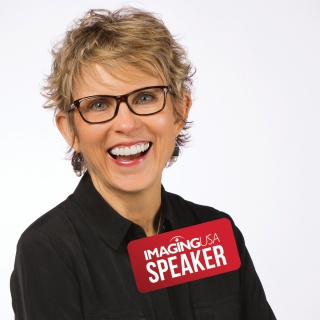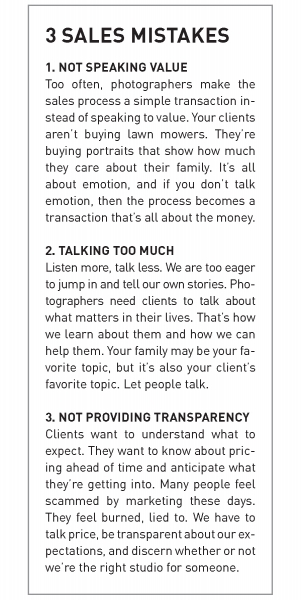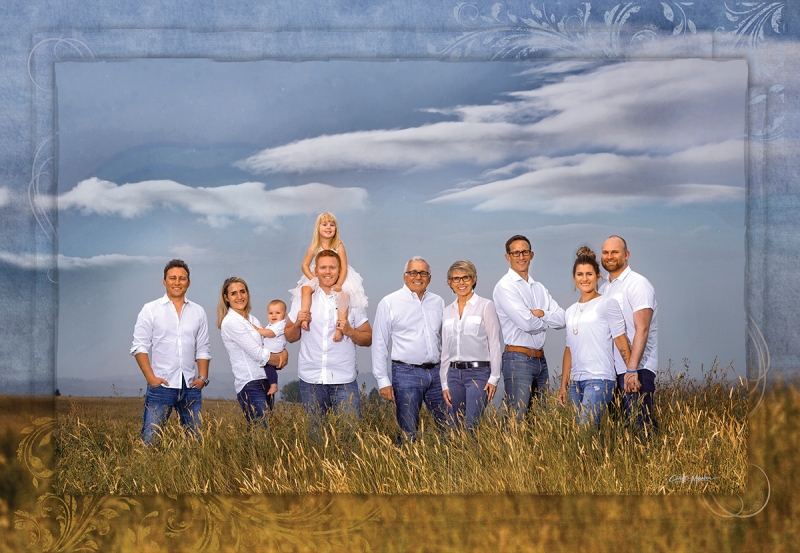How to respond to sales objections
Photographer Rachel Marten discusses how to respond to sales objections
• November 2019 issue
Rachel Marten, Cr.Photog., remembers all too clearly when the photography business just wasn’t cutting it financially for her family. The kids were getting older, college tuitions were looming on the horizon, and the family’s photography studio, Clark Marten Photography, then located in Columbus, Montana, was barely pulling in enough to make ends meet.

Rachel Marten will speak at Imaging USA 2020.
“We were stumbling over each other on the way to the poor house,” Marten remembers. “I told [my husband] Clark, ‘We need to make more money doing this—now,’ because my kids not being able to afford college was not OK with me. My kids were paying the price for our inability to figure out sales.”
Marten handles the studio’s sales, and she decided to shoulder much of the responsibility for turning around the revenue numbers. “I was always the shy person who sent out proofs, and people would send back their orders written on the back of proofs,” she recalls. “It didn’t really work well, but I was afraid of doing in-person sales because I was afraid of being judged. I was scared that people would ask me something I didn’t know the answer to or that I wouldn’t know how to deal with sales objections and would end up stammering through an explanation.”
Marten realized that she had to figure out the sales objections. So she wrote them all down and started practicing her responses. In the process, she figured out that the most common objections were really just questions that clients needed to ask to feel more at ease with their decisions.
“We have to get past the idea of overcoming objections like you’re doing a wrestling move,” says Marten. “They’re just questions.”
Fortunately, there aren’t a billion different sales objections. Marten, who will be speaking on this topic at Imaging USA 2020, points out that there are only about a half-dozen common objections, each stated in a variety of different ways. She explains how she deals with each one.

I didn’t know portraits were so expensive. Another common phrasing of this objection is I can’t afford this. What are they really telling you? Usually, they’re not saying, Holy cow! This is so expensive I’m leaving! They’re simply trying to compare portrait pricing, which they’re unfamiliar with, to something they already know. But they may not be comparing portrait pricing to a fair equivalent. They need a frame of reference. Help them understand your pricing. If, for example, they’re comparing your prices to their friend’s who takes pictures in the park and gives away digital images, explain that the artistry and skill you provide is on another level. Show examples of how your posing, lighting, and composition create flattering and beautiful images. Explain that professional portraits become family heirlooms handed down through generations. Compare various styles of print media and framing options they may want.
I would never buy anything that big. What do they consider big? My concept of big and theirs may be totally different. Sometimes they say of a print, Oh, it’s too big, when what they really mean is, It’s too expensive. It’s important to ask questions to understand their reasoning or you’ll be dealing with a harder conversation later when they call to cancel the order. We use ProSelect software to project images for clients so they can see the sizing and how it relates to other elements in their home such as wall size, furnishings, and layout. We talk about things like the impact of large images. When your little girl runs into the room and sees that large family portrait on the wall, there’s impact. It tells her, I matter. I’m worthy. Explain that you create art, and art belongs on your walls represented in large scale.
I only bought an 8x10 for the last portrait we had made. In the case of a child’s portrait, a parent doesn’t want one child to feel slighted by buying a bigger print of another child. Talk about this. Explain how our appreciation for things evolves as we go through life. Then offer suggestions. Maybe they can re-order a larger portrait of the older child, which you can recreate to complement the new one you’re making of the other child. Or maybe you can do a family portrait and add an additional individual portrait of the older child that will complement what you’re doing with the sibling. Be flexible and provide creative options.
I don’t have space on my walls. This one tickles me. Is the house made entirely of glass? Granted, many modern homes have a lot of windows. If that’s the case, urge them to consider a canvas wrap or another treatment that doesn’t include a large frame. Try to present this option before they get to the sales session. During the photo shoot, you could say, “People who are nervous about wall space love this because it eliminates the space a frame would have taken.” Later, if things change, you can always frame a canvas wrap. There’s also the option of a portrait on an easel. People who have a lot of windows often have more open floor space, so an easel presentation works perfectly.

I just want digital files. Most photographers are nervous about this objection, probably because many people voice it. First, figure out why they want these files:
- Social media: They want to post images online. You can offer to post a selection of portraits on Facebook and Instagram and tag them so they can share them online.
- Archiving: They want to save them to guarantee they’ll always have them. You can tell them that you professionally archive all your files so they don’t have to worry about saving them in a retrievable format for years to come.
- Printing: They want to print their own portraits, usually to save money. Build the value of your professional printing and how it’s different from what they could buy. Point out that the majority of people who get digital files never print their portraits, so it’s a waste of money to go through a session and not receive a piece of artwork to display.

I need my spouse to see this. There are two reasons people make this objection: The client wants to buy more than the couple initially budgeted, or the client likes too many images and needs help making final selections. Head this objection off at the pass by urging the couple to come to the showing together. Ideally, they’ll both be at the pre-session consultation as well because that’s when it’s best to talk about pricing and options. Too often, one person hasn’t told the other what it’s going to cost until the sales session, and then that other person is not happy. No one likes to be surprised in the showroom. Help clients understand up front that a portrait is an investment. Ultimately, this objection is a delay tactic. I need my spouse to see this is similar to I need to go home and measure my walls. It’s a way to push off the decision. If it comes down to it, you can suggest that they place an order as is in the showroom, and offer to hold the order until the next day so they can go home and get on the same page with their spouse or measure their walls. Confirm the order with them the next morning. That way they can get the green light they need to feel good about the purchase. If they don’t confirm the order by the next morning, the package pricing and any discounts expire.
In the end, says Marten, sales objections are less about protesting than they are about seeking information. “We need to get past this mentality that the client is going to be upset if they don’t get a certain answer,” she says. Most often, objections are just conversation starters. “I think of it like my 88-year-old mom is in the showroom and she simply has questions. When you put it in that context and respond to people in a respectful way, it changes everything.”
Jeff Kent is editor-at-large of Professional Photographer.
Tags: sales sales strategy

